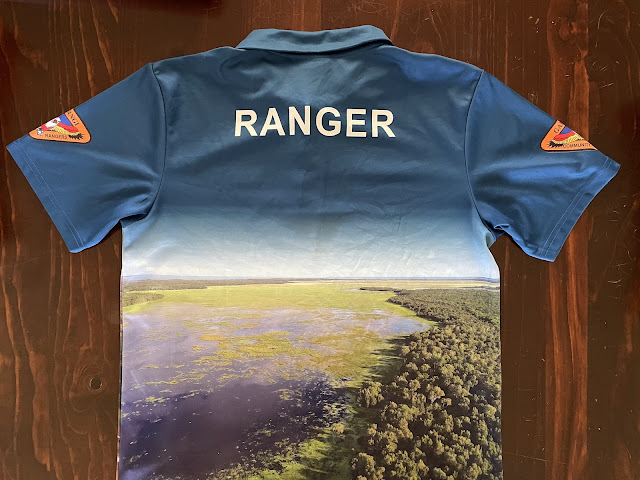GREEN TURTLES, FLATBACK TURTLES and REMOTE ISLANDS
Hi
For many months now the south easterly winds have been very persistent, preventing us getting out in the boat. This week the wind strength dropped off so we took the opportunity to do a boat patrol to the outer islands - Oxley, Lawson, McClure and Grant Islands.
Making good progress on a gentle sea.
These islands are popular turtle nesting areas. Below the photo shows four turtle tracks going up and down the beach. These tracks are made by female turtles seeking to find a spot to lay her eggs. Green turtles are the most common turtles in this area.
Note the dead trees along the beach. We are seeing this more and more as high tides come further and further into areas where salt water has not been seen.
We came across this Flatback turtle. They usually stay out in deeper water and only come into shallow water to nest so it was interesting to see this one near McClure Island.
Later this year we will be doing some marine mega fauna research with Charles Darwin Uni (CDU) and World Wildlife Fund (WWF). Amongst other activities, this will involve catching turtles, measuring them, taking a DNA sample and fixing a tracker on some ($4000 each tracker) and then releasing them. Usually, the local residents hunt turtles with a harpoon arrangement however research ethics would not allow this method. So...... to catch them we have to go into shallow water (0.8m - 1.4m), find a turtle and then follow them until they get tired and then dive in and catch them. Sounds easy enough........
The front flippers are very powerful so care needs to be taken otherwise you could get some painful slaps. The scientists call this 'rodeoing'. While all this is happening we need to keep a good lookout for crocs and sharks.
Below we cross a reef which protects the shallow bay ahead where many turtles graze.
Below Ashton jumps in and catches his first rodeo turtle - to much cheering and congratulations.
Young ranger Luke proved to be a natural - first attempt and immediate success - again to much cheering. This was great practice for the upcoming research work. And the young fellows enjoy the excitement and challenge.
Below is a female Green Turtle - very common in these waters. We measured her shell size, cut a small piece of skin off a rear flipper for DNA analysis and recored her details. These will be sent into the CDU scientists.
Below our boat anchored on the leeward side of McClure Island. This is where we are planning to camp while doing the marine research later this year - 3 x 10 day trips. Recently we added the extra canopy at the rear of the boat to provide a little more protection from the sun.
Luke and Tyson cleaning out an old well - where we plan to place a solar battery/pump/filtering arrangement for the research project camping needs.
They are both wearing our new sublimated ranger shirts. We provided two drone photos and then played around with the layout of the logos and text. They have proved to be a hit. We have even had community members wanting to purchase these shirts.
Below- the front of the new shirts shows the small community of Minjilang on Croker Island with Mission Bay in the background.
Below we begin the journey home passing along the southern side of Grant Island.
And then further west to Croker Island. On the water between Grant and Croker Islands we lose sight of all land - just a big wide open horizon - beautiful!! And I get paid to do this???
The next post will include some family and want is growing in the garden at the moment.
Until the next blog, fair winds.
Bryan and Nancy











Comments